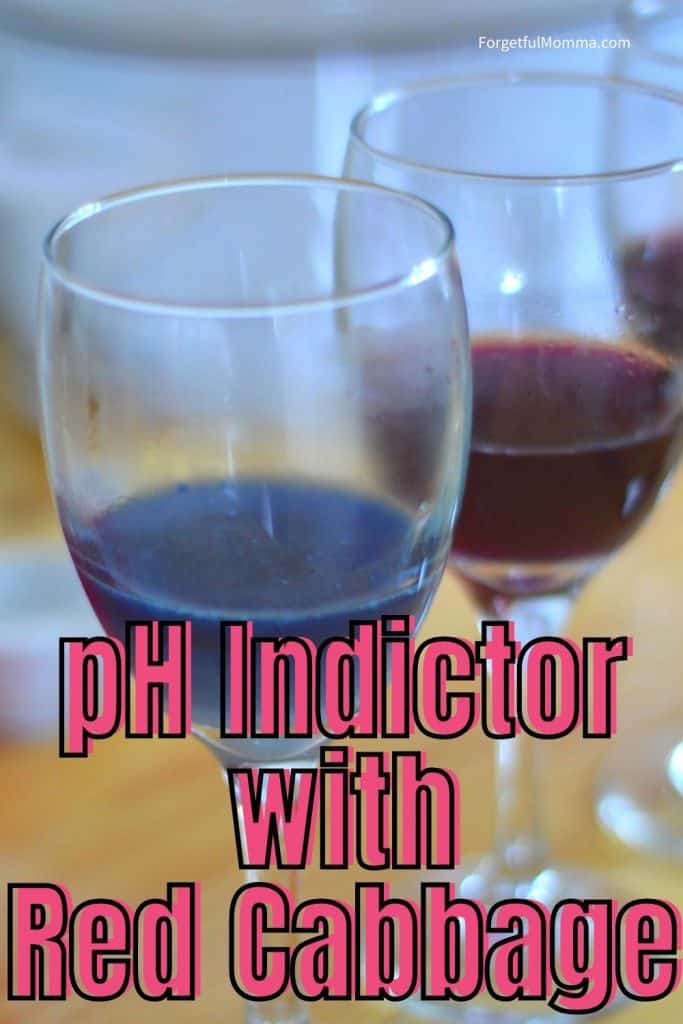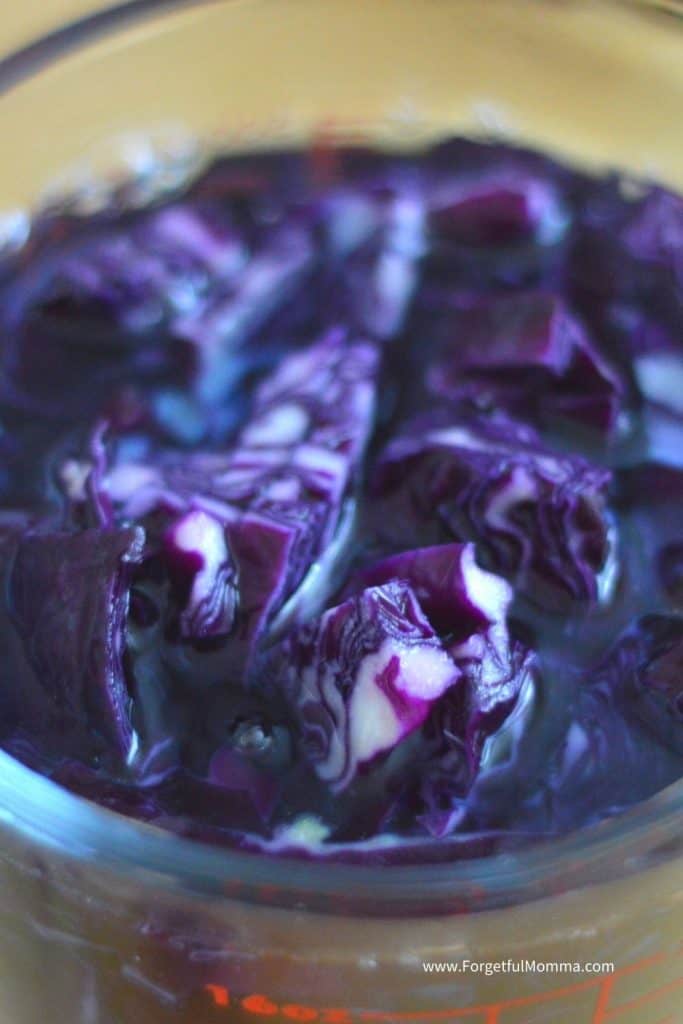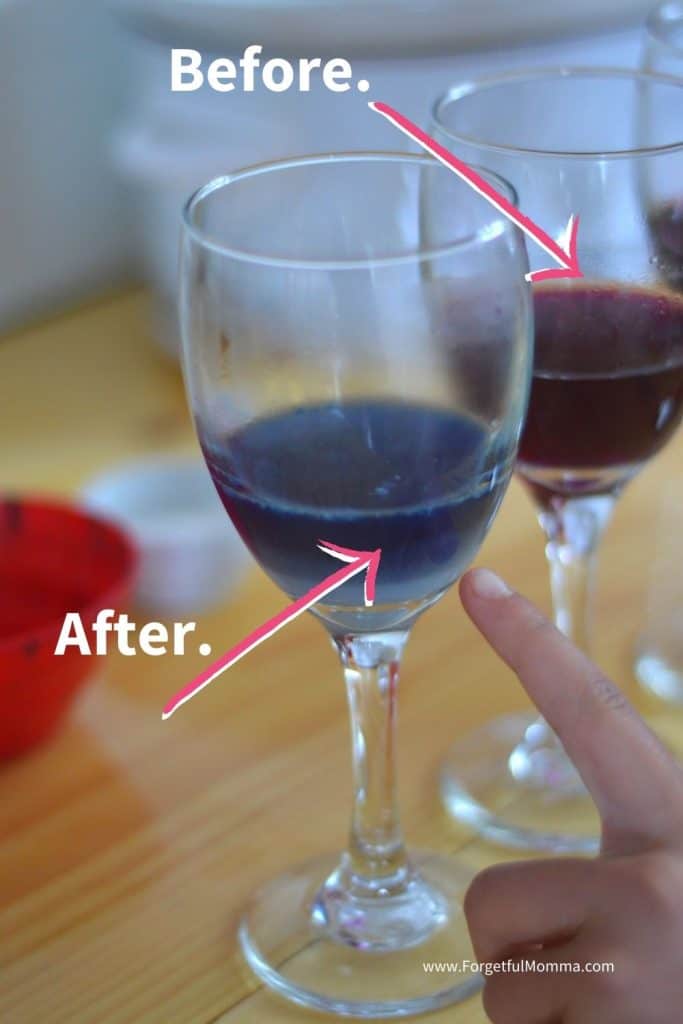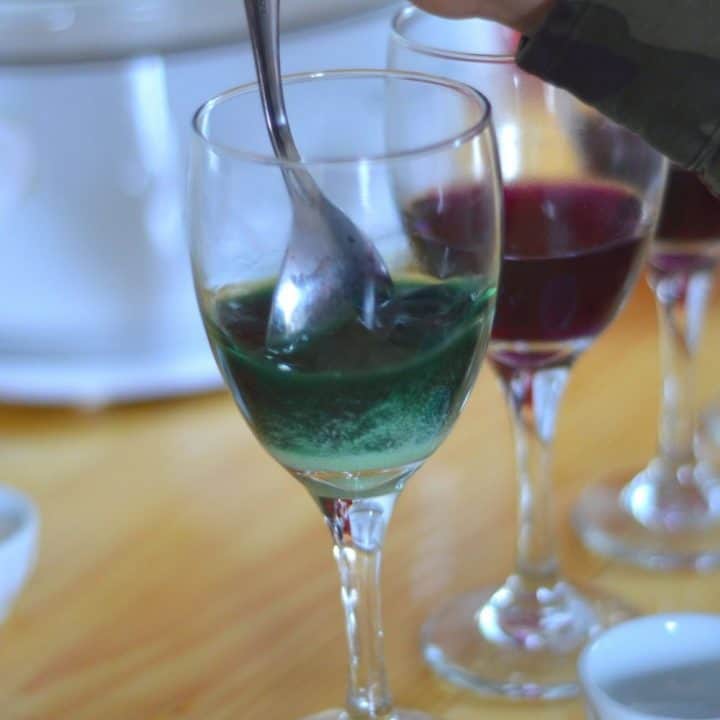Getting in the kitchen with your kids doesn’t always mean cooking or baking. It means spending time together doing something, anything, and having fun. This is fun, easy, and a great science experiment using things that you have in your home, mostly in your kitchen at that. Buy a small head of red cabbage, and create this pH indicator.

This post contains affiliate links, see my disclosure policy for more information.
Red Cabbage pH Indicator Colors
Write this out and stick it somewhere that you and your kids can see during the experiment so you can decide what the pH is of each of the add-ins.
Red – 2
Purple – 4
Violet – 6
Blue – 8
Blue-Green – 10
Greenish-Yellow – 12
What You Need:
- 1/2 – 2 head of red cabbage
- water
- lemon juice
- baking soda
- washing soda
- cream of tarter
- vinegar
How to Make A pH Indictor with Red Cabbage
Cut up your cabbage. Pour boiling water over it, and wait 30 minutes.

Strain water off of cabbage into small containers. I used wine glasses because I couldn’t find any small clear jars for the amount of water I got off my cabbage.
I had all the solutions that we were adding to our cabbage water in separate containers for ease of adding them for smaller hands.
Add something different to each cup of cabbage water.
Cabbage Acidic & Bases Reactions:

The moment the lemon juice hits the cabbage water, it turned red, a beautiful red as you can see above. Just from lemon juice. What would you guess is the pH here?

You can see how noticeable the difference is between the plain cabbage water and the water that we added the baking soda to. We did add a little too much, a spoonful and we probably could have gotten away with a lot less.

pH Indictor with Red Cabbage
pH Indictor with Red Cabbage with different items from the kitchen.
Materials
- 1/2 - 2 head of red cabbage
- water
- lemon juice
- baking soda
- washing soda
- cream of tarter
- vinegar
Tools
- small clear glass containers
- spoon
- bowl
- kettle
Instructions
- Cut up your cabbage.
- Pour boiling water over it, and wait 30 minutes.
- Strain water off of cabbage into small containers.
- Add something different to each cup of cabbage water. Baking soda to a cup to watch the reaction.
- Continue on with the rest of the bases.
Cabbage pH Indicator Basics
Red cabbage contains a pigment molecule called flavin (an anthocyanin). This water-soluble pigment is also found in apple skins, plums, poppies, cornflowers, and grapes.
Very acidic solutions will turn anthocyanin into a red color.
Neutral solutions result in a purplish color.
Basic solutions appear in greenish-yellow.
Therefore, you can determine the pH of a solution based on the color that it turns the anthocyanin pigments in red cabbage juice.
The color of the juice changes in response to changes in its hydrogen ion concentration; pH is the -log[H+]. Acids will donate hydrogen ions in an aqueous solution and have a low pH (pH 7).
